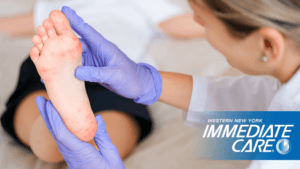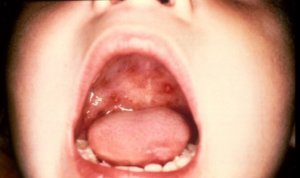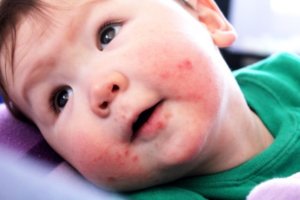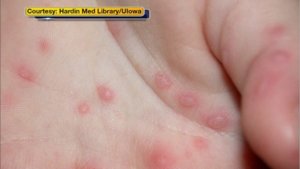
By: Lou Romig, MD
If you’re the parent of a young child, you may have heard of a playmate or classmate getting hand, foot, and mouth disease. Hand, foot, and mouth disease is a common virus in young children and, while it is usually not serious, it is very contagious.
What is hand, foot, and mouth (HFM) disease?
HFM is caused by the coxsackie group of viruses that are frequently found among children in communal environments such as daycares and schools. There’s no particular season for HFM disease, which can appear in waves throughout the year. The virus is quite contagious and usually spread through coughing, sneezing and salivation. The incubation period is three to six days between contact with an infected individual and the appearance of the first symptoms.
What are the signs and symptoms of hand, foot, and mouth disease?
HFM is named for the blistery rash that can appear in the throat and classically on the palms and soles of feet. It’s one of the few pediatric viruses that can cause rashes on the palms and soles, but it can appear anywhere on the body, especially around the mouth and in the diaper area. There may be no rash on the hands and feet.



Some children have fever with HFM disease, while others do not. The most common complication of HFM is the child’s impaired ability to eat and drink because of a very sore throat. Acetaminophen and/or ibuprofen may be needed to control pain, even if there is no fever. The worst of the disease usually lasts for three to four days, while the rash can last for a week or so.
What aged children are mostly affected by hand, foot, and mouth disease?
Most children with HFM disease are infants, toddlers and school-aged children. A coxsackie infection in older children and adults usually presents with fever and a sore throat but the rash is uncommon.
How is hand, foot, and mouth disease treated?
HFM is a viral infection, so antibiotics won’t do anything to treat it. The best we can do is treat the symptoms, which are primarily pain and fever. The rash is sometimes itchy, which can be alleviated with Benadryl. The rash itself does not need any treatment.
When can my child go back to daycare or school after having hand, foot, and mouth disease?
HFM spreads quickly at schools and daycare centers. HFM with the typical rash is considered contagious for one week after the rash starts, even if the child no longer has a fever. Like chickenpox, contact with the rash can result in spread of the disease. Some children only have the blisters in the throat and a fever without a rash. Those children can go back to school or daycare after they’ve been fever-free for at least 24 hours.
If you think your child may have hand, foot, and mouth disease, you should have him or her seen by a licensed medical provider.